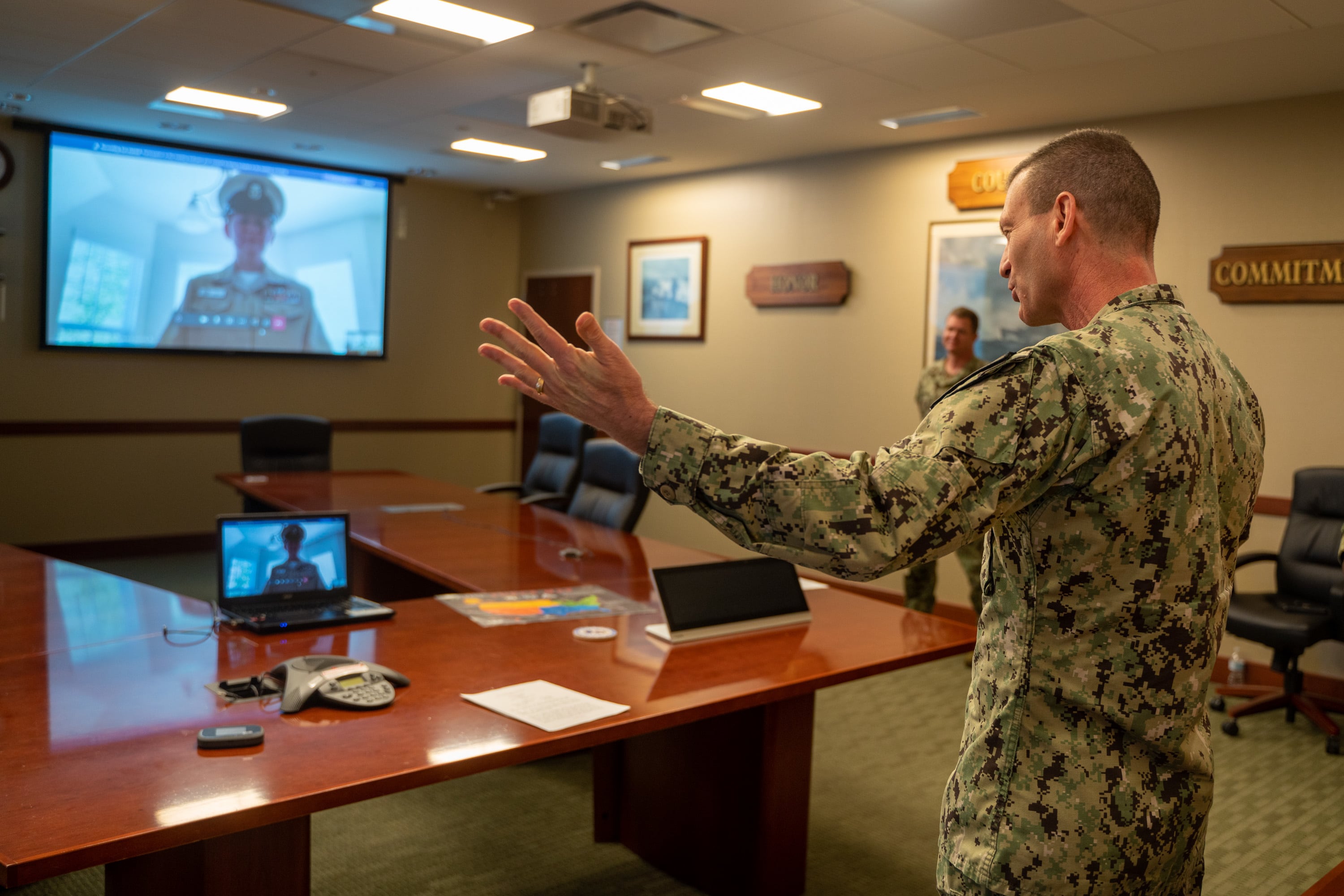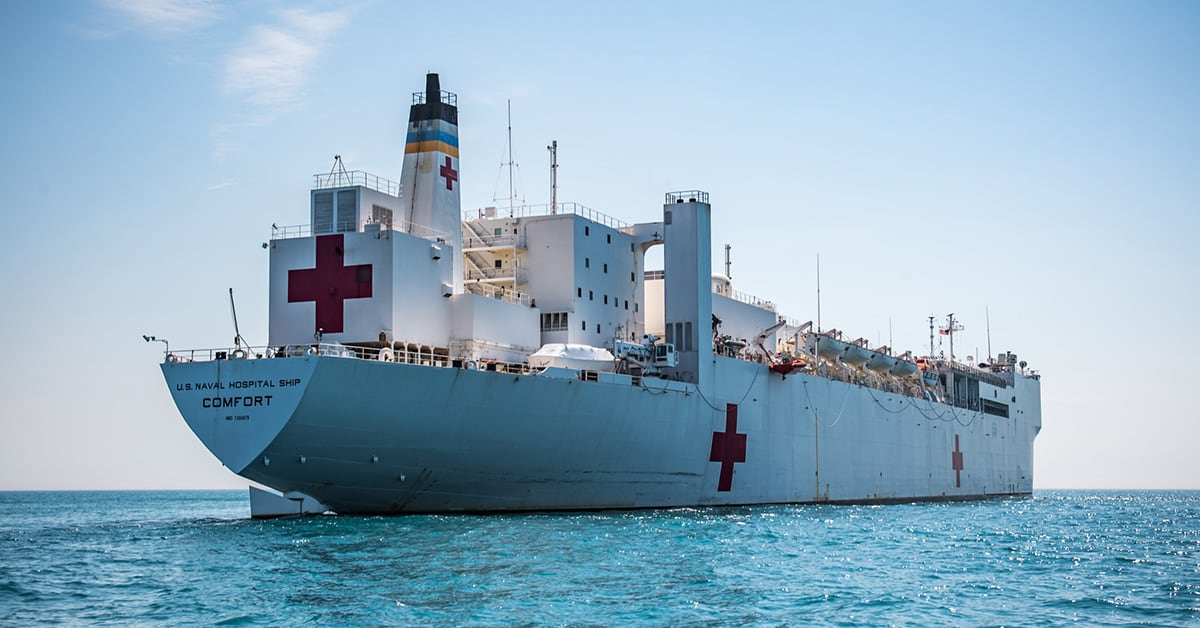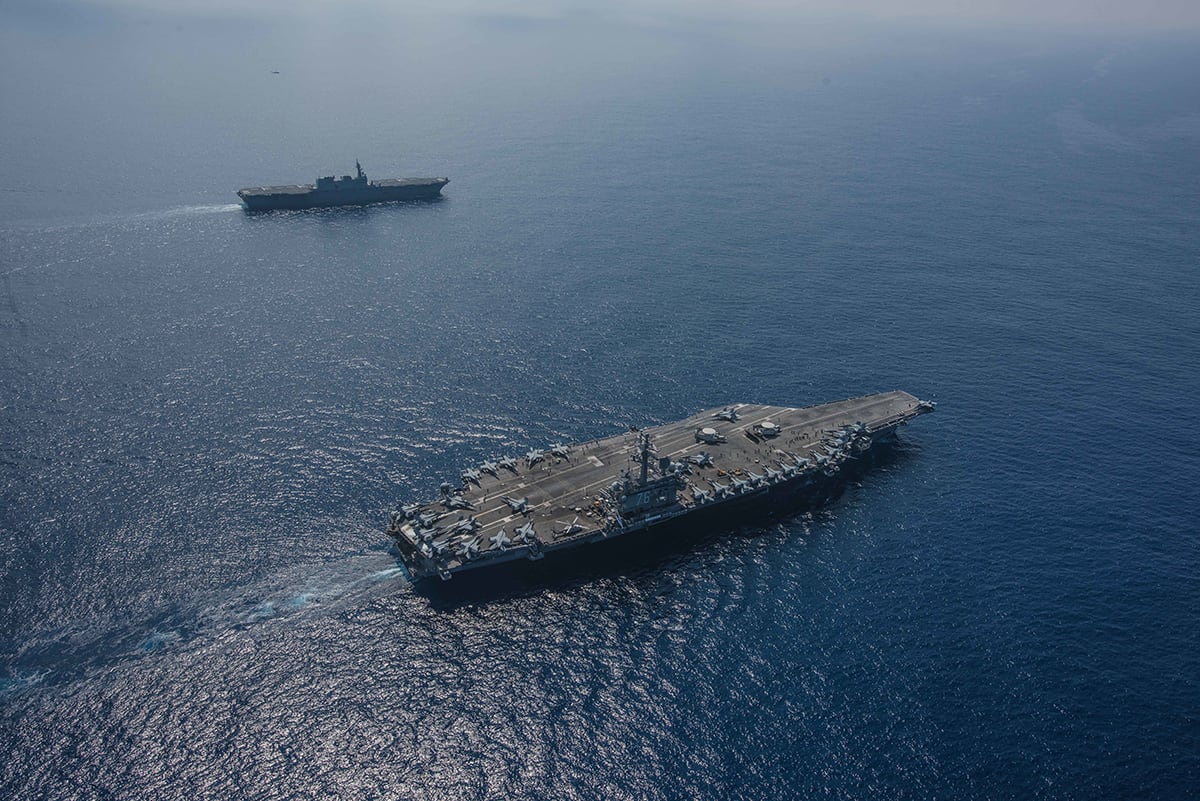WASHINGTON — In 2020, the year marked by telework due to COVID-19, the U.S. Navy learned that it could move rapidly on IT projects. The service doubled its bandwidth in weeks. It built two new sites for its virtual private networks. It quadrupled its telework capacity.
After the service did in weeks what Navy Chief Information Officer Aaron Weis said would normally take years, he wants to ensure that the Navy doesn’t revert to pre-pandemic IT practices that it cast off to enable telework for the service in response to COVID-19.
“Now that we know that we can fly, you know, we don’t settle for ground travel,” Weis said.
Before the pandemic, the Navy was in the midst of a Microsoft Office 365 pilot. The Marine Corps went from zero Office 365 users to about 150,000, Weis said, while the Navy scaled a 10,000 user pilot program up to 160,000 users — in about six months.
The original timetable to deliver Office 365 to that many users was five years. To be successful in the remote work environment, the Navy set aside the normal processes that slow down IT projects under normal circumstances.
“A lot of that process doesn’t add any value,” Weis said. “And ... we have very fragmented [command and control] and accountability over our IT infrastructure, which, in normal times makes it very difficult for us to move the needle. COVID in the IT world is kind of the equivalent of wartime powers for IT. We just did it.”
RELATED

Weis added that some people in the service that have suggested returning to old practices and timelines. When the topic comes up, Weis highlights the potential cost savings from moving faster, so IT leaders can continue the momentum they gained during the pandemic.
Building out a cloud-enabled IT infrastructure, which was a major push for the Navy last year, is an area where massive cost savings can be found. The Navy CIO’s office released in early December policy updates to accelerate cloud services adoption.
“What that enables you to do is undergo a wholesale transformation for how you deliver a capability, and at the end of that transformation you will be able to retire huge swaths of legacy infrastructure,” Weis said. “And that legacy infrastructure are boat anchors we drag around, that cost us ... a lot of money. They expose us from a cybersecurity and risk perspective.”
IT portfolio review
In December, the Navy announced that it had begun a review of its $4 billion IT portfolio to better understand its IT infrastructure and improve how it allocates resources. Weis told C4ISRNET that the portfolio review was part of the service’s effort to “put math around a huge wedge of our IT spend.”
“The main goal coming out of that is math,” he said. “To be able to apply real math to the questions at hand around investment, alignment of investment.”
The IT office wants to know how much it’s spending and the amount of assets it has, including software and hardware. The office wants to get a better handle on where its legacy and excepted networks are and how much they cost the service.
The Navy is doing the portfolio review in a new way, Weis said. Instead of a traditional call for data, the service is connecting existing data sources into an enterprise data repository.
RELATED

“We’re making joins between sources of data that weren’t initially set up to do that, and creating a mass of data that allows us to have huge insights into that IT infrastructure,” he said.
Other 2021 goals
The IT office wants to focus on making its infrastructure enduring, Weis said.
The service will meet that goal in part through new policies and memos, including forthcoming memo that will outline how the CIO shop is delivering new capabilities in the context of its cloud infrastructure. That memo is coming “very soon,” according to Weis.
The Navy will also work toward making data more accessible, he said, a critical piece of multidomain operations and better-informed decision-making for commanders.
“What are the authoritative sources of data? Where do we see those and now how do we flatten that data and make it broadly available for others for transformational effort?,” Weis said. “That will be important.”
Data is a key element to all the military services’ efforts on all-domain operations, including the Navy’s Project Overmatch, its tactical network effort to connect sensors and shooters. Weis is part of the Project Overmatch executive steering group, where he will help ensure that the project fits into the framework of the Navy’s information superiority vision.
“The requirement going forward and in the modern world is that we can securely move any information from anywhere to anywhere,” Weis said. “That’s a baseline requirement going forward. And that, while that’s very simple to say, that’s not how our infrastructure and our networks are organized today.”
The overhauled tactical network will have to plug in with the Navy’s enterprise network, an effort called Project Plaid. One of his key interests in 2021 is the connection of Overmatch and Plaid, an effort he compared to connecting the different tracks of the transcontinental railroad.
“They knew that those rails were going to meet and they were going to be the same gauge, the trains were going to be able to seamlessly move across it, they built to the same point and connected the tracks,” Weis said. “That’s what has to happen between Overmatch and Plaid, and the rest of the modernization effort.”
Andrew Eversden covers all things defense technology for C4ISRNET. He previously reported on federal IT and cybersecurity for Federal Times and Fifth Domain, and worked as a congressional reporting fellow for the Texas Tribune. He was also a Washington intern for the Durango Herald. Andrew is a graduate of American University.







